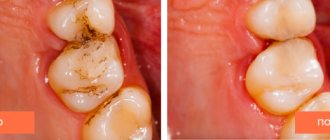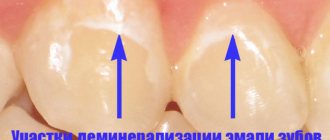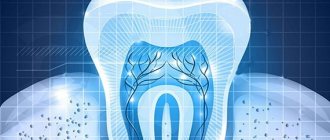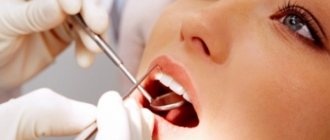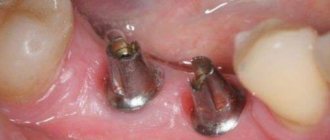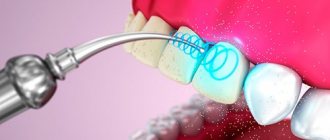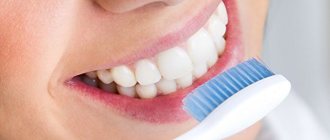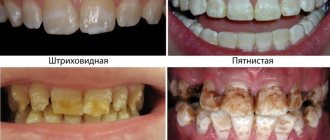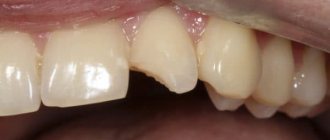5795
Electrophoresis is a physiotherapeutic treatment method that involves introducing medications into tissues using a low-voltage direct electric current.
This method of delivering drugs to the affected areas has a number of advantages over others (enteral, parenteral, local in the form of regular rubbing, etc.).
In addition, electric current of certain parameters itself has a healing effect on the tissues of the human body.
General information
Electrophoresis is performed using special devices - direct current sources with special characteristics. Electrophoresis devices may differ from each other in design and parameters. In 80-85% of cases in dentistry, galvanic type devices are used.
In particular, the Potok-1 device has the following parameters:
- The current value varies in the range of 0-50 mA.
- The output voltage depends on the conductivity of the patient’s skin and ranges from 40-80 V.
- A sound timer with an interval of 1-99 minutes indicates the end of the procedure.
The device has smooth current regulation, stable output voltage and protection against network breaks.
drugs are in the form of solutions in which the therapeutic substances are in the form of negative and positive ions. It is their charge that ensures movement along the electrical circuit and penetration into the affected tissue.
In a simplified form, electrophoresis technology looks like this: pads or tampons, moistened with a medicinal solution, are applied to the oral mucosa (gums) or inserted into the canal (carious cavity) of the tooth.
An electrode called active is connected to them through a hydrophilic gasket. Its second end is connected to the terminal of the device that has the same charge as the drug ions. Another electrode (passive), necessary to complete the circuit, is attached to the skin through a hydrophilic pad.
When voltage is applied to the electrodes, negative ions of the drug solution begin to move towards the anode, and positive ions towards the cathode. In this case, the drugs penetrate into the tissues, accumulate there and actively act on the pathogenic focus.
The duration of one electrophoresis session is 10 - 30 minutes. For a full course of treatment, 10-20 sessions are usually required, carried out every day or every other day.
Frankly about the effectiveness of electrophoresis for teeth
3278
Electrophoresis, as an auxiliary method for the treatment of certain dental pathologies, has been used for a long time.
The action of electric current promotes the rapid penetration of drugs into the soft tissues of the oral cavity and stimulates the functioning of blood vessels.
General information
Electrophoresis is one of the types of physiotherapeutic procedures that combine the effects of a drug and electric current, thereby speeding up the treatment process.
The principle of operation is based on the effect of low voltage electric current on an aqueous solution of a certain product. Based on the theory of electrolytic dissociation, in a solution there is a decomposition of molecules into cations - ions with a positive charge, and negative ones - anions.
When two electrodes are placed in a solution and a current source is connected to them, ions begin to move: anions will rush to the anode (the pole with a positive charge), and cations will move to the cathode (negative pole).
This principle underlies the effect of electrophoresis on the human body and, in particular, on teeth.
Penetration of drug particles occurs to a shallow depth, and usually a larger volume remains in the skin. They are then carried throughout the body through the blood, exhibiting their therapeutic effect.
Due to the increased concentration of the drug at the injection site and high ion activity, physicochemical reactions are activated in tissues , which creates a stable pharmacological result.
The device for electrophoresis is available in a desktop version and has a rectangular plastic body. The kit includes several wires for connecting the electrodes.
During the treatment session, the device maintains the current strength in a stable state, and upon completion, it smoothly reduces it to zero and gives a signal to stop working.
The front side has the following symbols:
- Network - to turn the device on and off;
- Start and Stop - used to start and stop electrophoresis;
- timer – sets the exact time of the procedure;
- sockets marked “-” and “+” are places for connecting wires with electric current;
- current supply range indicator with its selection button;
- digital electric current indicator;
- regulator of its strength.
All medications are administered in an acceptable concentration of 0.1% to 5% , based on their polarity. Potent medications are administered in a single dosage.
as a solvent , but if poorly soluble compounds are used, then Dimexide, buffer solutions or alcohol are used.
Indications
The scope of application of electrophoresis is extensive. It is prescribed for gynecological, neurological, surgical and pediatric diseases. Dentistry cannot do without it.
The following pathologies are successfully cured:
- diseases of the oral cavity that have become chronic;
- carious lesion;
- periodontal disease;
- inflammation of the mandibular joints;
- gingivitis;
- periodontitis;
- scars on the mucous membrane and skin of the jaw;
- dental cysts and granulomas;
- inflammation in the salivary glands;
- condition after surgery (teeth extraction, etc.) and injuries;
- glossophytia is a chronic condition of hyperplasia of the filiform papillae of the tongue;
- pulpitis;
- neuralgia;
- alveolitis
The list of indications for electrophoresis is extensive. Its implementation in complex therapy gives a lasting healing effect.
Contraindications
Electrophoresis is not prescribed to all patients. There are several restrictions under which it is not carried out:
- pathologies of the heart and blood vessels;
- bronchial asthma;
- blood diseases;
- sclerotic changes in the vessels of the brain;
- active phase of tuberculosis;
- any malignant formations;
- presence of a built-in pacemaker;
- allergies to injected drugs;
- cachexia;
- epilepsy;
- skin diseases;
- low skin sensitivity;
- high temperature against the background of exacerbation of purulent and inflammatory processes;
- bleeding.
Advantages and disadvantages
The advantages of this type of physiotherapy are as follows:
- A strictly calculated volume of medication is administered.
- The procedure has a prolonged effect (i.e. the drug accumulates), which is important in the treatment of complex conditions.
- The medicine is administered in a form accessible to the body - ions.
- If there are problems with blood microcirculation, the drug is injected into the affected area.
- The procedure is safe and painless for the patient.
- Side effects and complications are observed in isolated cases.
- Due to the fact that medications do not enter the gastrointestinal tract, they are not destroyed.
- It is possible to inject drug solutions into otherwise inaccessible tissues (dentin, periodontitis, pulp).
- A sufficient concentration of the drug is created locally without saturating the blood and lymph.
- The procedure quickly stops the manifestation of the main symptoms of the disease.
- It has additional bactericidal, decongestant, analgesic, soothing, and regenerating effects on tissues.
Important! Electrophoresis does not apply to independent treatment methods, but is used only in combination with other types of therapy.
Its disadvantages include the fact that sessions are possible only if the patient has no contraindications.
Feelings and effect
During the session, the patient feels a faint metallic taste in the mouth. Many also note a slight tingling sensation and slight irritation at the site where the electrodes are attached.
Almost all patients undergo the procedure without pain, and they do not experience any particular anxiety or discomfort.
Positive changes in the condition occur gradually as the medication accumulates:
- ion exchange improves in cell membranes;
- microcirculation changes;
- the blood supply to the teeth and soft tissues of the oral cavity improves;
- local immunity increases;
- pain is relieved;
- the enamel is almost completely restored;
- inflammation is eliminated.
Simultaneously with the local effect, electrophoresis also has a general effect on the body, namely:
- blood and lymphatic vessels dilate;
- the metabolic process returns to normal;
- the synthesis of bioactive compounds is stimulated;
- relaxation.
The absorption of the drug and the manifestation of its therapeutic effect depend on the following factors:
- person's age;
- session duration;
- dosage of the administered drug and its concentration;
- electric current strength;
- individual characteristics of the body.
All these circumstances are taken into account and correctly corrected by the dentist in each individual case, i.e. individually.
Stages of the procedure
The procedure is carried out as follows:
- First, electrodes are placed on the inflamed area. Hydrophilic pads made of bandage or cotton wool with a pre-applied solution of one of the drugs are placed with them.
- The device produces a constant low-voltage electric current ; through the pads, the medicine begins to flow into the soft tissues of the mouth. The duration of the process is 15-30 minutes. depending on the pathology. Course therapy consists of 7-15 sessions.
- to 80 V. at a current density coefficient of 0.1 mA to 0.3 mA.
The current is applied with a gradual increase in its strength until the person experiences a slight tingling sensation. If discomfort occurs at the beginning of the session, the session is immediately stopped or the current intensity is reduced.
Intraoral electrode
A round (1 cm in diameter) lead plate is soldered to a wire that is covered with insulation. The padding is the cotton wool that is wrapped around the plate. The thickness of such a gasket is no more than 1 cm.
A plate with cotton wool moistened with medicine or water is placed in a rubber cap made from a fingertip. A small hole is cut on one side of it. Then the electrode is applied so that the hole is on the mucosa.
The current is supplied progressively, i.e. its strength increases until a slight burning sensation appears at the site where the electrode is attached.
Gingival electrode
A wire 2-10 cm long is soldered in the middle of the plate. A hoof-shaped cap is cut out of a rubber tube for drainage. A wire is pulled through a hole made in its wall and a plate is placed.
For padding, take a bandage, which is rolled into a strip of 8-10 layers. The maximum current supply depends on the length of the electrode. So, with its length:
- 9-10 cm, current strength corresponds to 5 mA;
- 3 mA at 5-6 cm;
- only 2 mA – if the length is within 2-4 cm.
Root canal electrophoresis
Before the session, the dentist must first perform mechanical and then medicinal treatment of the cavity affected by caries, as well as accessible areas of the root canals.
Next, a cotton swab soaked with medicine is placed at the bottom of the dental cavity. A part of a single-core wire with insulation, exposed by 0.3 cm, is inserted into it.
To secure it to the problem unit and isolate it from wetting with saliva, the free area of the unit and the wire are filled with wax. The other part of the wire is connected to the device. The passive electrode is fixed on the forearm, and its wire is connected to the opposite pole of the device.
At the end of the session, wax with wire and cotton wool is removed from the tooth, and a tampon with 5% iodine tincture and eugenol is applied.
Uses of calcium
To restore the enamel and return it to its original characteristics, physiotherapy with calcium gluconate is prescribed.
The session is carried out on an outpatient basis, and in combination with the main treatment. The procedure compacts the tooth surface and fills it with important elements.
Calcium is introduced using electrodes and special solutions. Electrodes are inserted behind the gum, and flat terminals are brought out to connect wires from the device to them. To complete the circuit, another electrode is attached to the hand.
Afterwards, a tampon moistened with a calcium solution is placed behind the lip. After such preparation, the device parameters are set to the required values. Session duration – 20 minutes .
Features of use for pregnant women and children
When a pregnant woman has dental problems, electrophoresis is the only safe treatment for her and the fetus. The benefit and safety of the procedure is explained by the fact that the injected drugs go directly to the site of pathology, without affecting the internal organs.
Such treatment can be carried out at any month of pregnancy if the woman has no general contraindications. If carrying a child is accompanied by vomiting, poor condition of the child, or eclampsia, then the procedure is contraindicated.
Important! Before performing electrophoresis, a pregnant woman must obtain permission from a gynecologist.
When conducting, electrodes with soldered, rather than clamped, wires are used. They also must be well secured with bandages.
Since the sensitivity of a child’s skin is higher than that of an adult , the strength of the electric current increases more slowly and is brought to the indication prescribed by the doctor within 4-5 minutes. The density depends on the age of the baby and ranges from 0.03 mA per 1 cm2 to 0.08 mA per 1 cm2. The duration of the session should not exceed 10 minutes.
All children react differently to the procedure: some are quiet and calm, others have a negative reaction.
If the baby cries during and after treatment, the decision to continue it is made by the doctor, based on the balance of benefits and possible risks.
Price
It is impossible to name the exact cost of electrophoresis. It ranges from 300 rub. up to 650 rub. per session. The price of the procedure depends on the following factors:
- type and complexity of pathology;
- cost of drugs used;
- clinic pricing policy.
Reviews
In dentistry, electrophoresis is an effective treatment technique. The healing effect is achieved through simultaneous exposure to electric current and a drug administered locally.
Source: https://www.vash-dentist.ru/lechenie/zubyi/osnovyi-provedeniya-elektroforeza.html
Indications
Oral diseases for which electrophoresis is indicated include:
- pulpitis (infection in the tooth canal);
- alveolitis (inflammation of the socket in which the tooth is located);
- cysts and granulomas formed in various dental pathologies;
- post-filling pain that sometimes occurs after dental treatment;
- stomatitis (inflammation of the oral mucosa of various etiologies);
- arthritis and arthrosis of the mandibular joints;
- periodontal diseases (gingivitis, periodontitis, periodontal disease, periodontolysis, periodontoma, apical chronic periodontitis);
- scars on the mucous membranes and skin of the jaws;
- inflamed salivary glands (sialoadenitis);
- injuries, including surgical ones;
- glossalgia (pain and discomfort in the tongue);
- pathologies of peripheral nerves (neuralgia, neuritis).
The need and possibility of electrophoresis is determined by the doctor in each specific case, taking into account the nature of the disease and the patient’s condition.
Modern types of local anesthesia in dentistry and drugs popular among dentists.
Come here if you are interested in methods of treating dental enamel hypoplasia in children.
At this address https://zubovv.ru/lechenie/zubyi/karies/tsementa-naskolko-opasna.html all the most important things about the treatment of tooth root caries.
Indications for the use of electrophoresis in dentistry
- periodontitis;
- pulpitis;
- glossalgia;
- glossitis;
- purulent and inflammatory diseases of the oral cavity;
- dental cysts;
- dental granulomas;
- pathology of the facial nerve;
- inflammation of dental cells (alveolitis);
- lesions of the oral mucosa;
- severe pain after treatment or tooth extraction.
Despite the rapid development of technology in dentistry, electrophoresis has been and remains one of the most effective and affordable physiotherapeutic methods for treating hard and soft dental tissues.
Contraindications
Due to the peculiarities of the action of electric current, electrophoresis is not indicated for all patients; there are a number of restrictions on its use:
- Cardiovascular diseases in the stage of decompensation.
- Sclerosis of cerebral vessels.
- Bronchial asthma.
- Oncological diseases (in particular, neoplasms on the oral mucosa).
- Allergy to medications used for electrophoresis.
- Purulent-inflammatory processes accompanied by an increase in temperature above 38 °C.
- Systemic blood diseases.
- Bleeding or susceptibility to it.
- Epilepsy with frequent seizures.
- Presence of a pacemaker.
- Hypertension.
- Active phase of tuberculosis.
- Toxicoses.
- Cachexia.
- Psychosis and hysteria, accompanied by psychomotor agitation.
- Individual intolerance to electric current.
Calcium chloride - application
Calcium chloride in ampoules can only be used after the medicine has been prescribed by a doctor. The specialist takes into account the type of disorder, symptoms, severity of changes, according to which he sets the dosage, frequency of administration and method of application. Before taking calcium chloride for allergies, it is necessary to accurately determine the triggering factor. The patient must follow the instructions of the specialist, strictly observing the instructions.
Calcium chloride for intravenous administration
When prescribing calcium chloride intravenously, the doctor always indicates the method of administration:
In case of placing an IV:
- The dosage of the drug indicated by the doctor is diluted with saline solution, using 100-200 ml of sodium chlorine solution 0.9%.
- Drip slowly, over 30-40 minutes.
When injecting the drug into a vein:
- Be sure to take into account the speed of infusion.
- In most cases, the patient is prescribed 5 ml of calcium chloride solution.
- The nurse administers this volume of the drug very slowly. The injection takes 3–5 minutes.
The duration of treatment is determined:
- nature of the disease;
- severity of symptoms;
- achieved therapeutic effect.
How to take calcium chloride orally?
When prescribing the drug orally, the doctor always indicates how to drink calcium chloride in ampoules.
- Both 5% and 10% solutions can be used.
- Take the medicine 2-3 times a day.
- At one time, an adult is prescribed 10-15 ml of solution orally, for children - no more than 10 ml.
- The oral form of the drug is always used after meals.
How to use calcium chloride on your face?
Many girls use calcium chloride on their face to cleanse their pores. The product is used as a peeling. The effect of use is noticeable after the first procedure. In this case, much depends on the correctness of the cleansing procedure.
Calcium chloride for the face should be applied as follows:
- The ampoule is carefully opened and its contents are poured into a clean container.
- Apply the solution to the facial skin with a cotton pad.
- After drying, apply the next layer. There can be 3–8 of them in total.
- After the last layer has completely dried, the cotton pad is soaped and the foam is applied to the face.
- Using gentle massaging movements, rub the foam into the skin until pellets appear.
- Wash everything off with warm water and apply nourishing cream.
Calcium chloride for heels
One of the unusual ways to use calcium chloride is to peel your heels and feet.
- Use a 10% calcium chloride solution and a stiff brush.
- Apply a small amount of solution to clean heels and rub with a brush.
- Rub until the skin begins to peel off.
- I periodically add the solution so that the skin does not dry out completely.
- After completing the procedure, rinse your feet under running water and apply cream.
Advantages and disadvantages
Compared to other methods of dental treatment, electrophoresis has a whole set of advantages that allow it to still be widely used in dentistry.
- Complexity of effects (pain relief, bactericidal and anti-inflammatory effect, increased trophism and microcirculation in tissues).
- Efficiency and speed of action of the drug thanks to its directional input.
A high concentration of drugs is created in the affected area, which allows you to quickly relieve inflammatory processes in the internal and external tissues of the tooth and gum.At the same time, other areas and the body as a whole are not exposed to the unwanted effects of medications.
- The ability to inject medicine into places that are inaccessible to other methods (tooth enamel, difficult-to-penetrate canals and cavities).
- Insignificant side effects from the medications used . Thanks to their strict dosing and precise administration, the systemic effect is minimized.
- The procedure is painless (only a slight burning and tingling sensation may be noted in the tissues to which the electrodes are connected).
- Low risk of allergic reactions.
- Prolonged action (up to several weeks) of drugs that accumulate (deposit) in the tissues adjacent to the affected area and gradually enter the pathogenic zone.
In contrast to the advantages, the disadvantages of electrophoresis are few. The main one is a significant number of contraindications.
In addition, electrophoresis is not an independent method of treatment. It is used only in combination with other methods of therapeutic or surgical intervention.
Efficiency
Electrophoresis with calcium gluconate has only positive effects on teeth.
- It acts locally, without entering the lymph and bloodstream.
- The ionized molecule binds to fluorine much more actively and forms a strong structure.
- Weak currents activate immune processes in the body and chemical and biological reactions.
- A small dose is administered, but the effect is prolonged.
- The sensitivity of hard tooth tissues decreases.
- The antiseptic effect reduces the risk of complications.
Calcium preparations, in addition to electrophoresis, can be administered orally or intravenously. But the percentage of their absorption from the gastrointestinal tract is very small, and when administered into a vein, a number of side effects are observed (fever, tachycardia, etc.).
After electrophoresis, it is necessary to carry out fluoridation of the teeth. Without fluoride, calcium is not able to strengthen in the crystalline structure of the enamel. It is hydroxyfluorapatite that gives enamel hardness and resistance to infection.
Feelings, achieved effect
Electrophoresis does not cause pain or any significant discomfort. The patient feels only minor sensations in the form of:
- slight tingling in the tissues through which electric current is passed;
- irritation in the hand that holds the electrode (it is recommended to change hands during sessions).
There may be redness of the skin in the area where the hydrophilic pad is applied.
The positive effect of treatment occurs gradually as the number of sessions increases. It is caused not only by the effects of medications.
Electric current itself intensifies metabolism in the area of its action (increases metabolism at the cellular level), improves microcirculation of blood and lymph, and increases tissue trophism.
Electrophoresis in dentistry
Electrophoresis in dentistry is a physiotherapeutic procedure when medicinal substances are introduced into the body through electric current. This method uses special compounds that, under the influence of electricity, disintegrate into ions, accumulate in the pathological area and have a targeted effect on it. Thus, maximum therapeutic effect is achieved.
Technique
The electrophoresis technique involves placing hydrophilic and medicinal pads (tampons) on the affected teeth and gums, connecting electrodes to them, setting the desired operating mode of the device and supplying current. The steps are performed in the following order:
- A pad or tampon soaked in a medicinal solution is placed on the treatment area (skin, oral mucosa, gums, tooth cavity).
- A hydrophilic pad of the same size, soaked in tap water, is placed on top of the medicinal tampon. It is needed to evenly distribute the current over the entire surface of the treatment pad and ensure the penetration of the medicine into the tissue.
- The second hydrophilic pad is placed on the skin at the place where the passive electrode is connected (most often on the wrist).
- Electrodes are connected to hydrophilic pads: active from the side of the treatment pad or inside the channel with a tampon, passive - to the hydrophilic pad placed on the skin.
- If necessary, the entire structure is secured with bandages.
- The electrodes are attached to the corresponding terminals of the device, the desired mode is selected, and the voltage is turned on.
The current strength, duration and number of sessions are determined by the type of electrophoresis. For example, with transcanal, used to introduce drugs into the tooth cavity, a current strength of 3 mA is used, the session duration is about 20 minutes.
The number of sessions is also determined by the type of pathology. For fibrous periodontitis, for example, 1-2 sessions are performed, for granulomatous or granulating periodontitis - 3-4 sessions (for lesions up to 2 mm) or 5-6 (for lesions up to 5 mm).
Important detail. The location of the positive or negative electrode depends on the form in which the drug is present in the solution - cations (+) or anions (-).
If anions, then a negative electrode (cathode) is connected to the hydrophilic pad placed on the medicinal pad. When current passes, negative ions of the drug will move from the cathode to the anode, penetrating into the skin or mucous membrane.
Intraoral electrode
The device is designed for connection to the oral mucosa. May have different shapes. One option is a round plate with a diameter of 10 mm made of lead, to which a wire in a waterproof sheath is soldered.
The plate is wrapped in a hydrophilic pad made of cotton wool 10 mm thick. The electrode is placed in a rubber cap, which has a hole opposite the plate. When applied to the gum, the hydrophilic pad is adjacent to the area of the mucous membrane that is planned to be exposed to current.
Gingival electrode
Gingival electrodes are designed to supply current to the pre-root area of the gum. They look like a rectangular plate 2-10 cm long with a soldered insulated wire. A bandage rolled into a strip of about 10 layers is used as a pad.
The current strength supplied to the gingival electrode depends on its size and should not exceed:
- 5 mA – for electrode up to 10 cm;
- 3 mA – up to 6 cm;
- 2 mA - up to 4 cm.
Let's consider together the causes of tooth enamel destruction in children and possible preventive measures.
In this publication, read about the importance of premedication in pediatric dentistry.
Here https://zubovv.ru/lechenie/zubyi/kakim-obrazom-deystvuyut-antibiotiki-pri.html we will tell you which antibiotics for toothache are the safest and most effective.
Root canal electrophoresis
Before the procedure, the canals of the teeth are cleaned - first mechanically, then medicinally (with alcohol, ether or a 3% solution of hydrogen peroxide).
A cotton swab soaked in drugs is placed at the bottom of the dental cavity and the bare end of an insulated single-core wire (active electrode) is inserted into it.
To prevent saliva from entering the cavity, the exiting wire and tooth are covered with sticky wax (rosin mixed with beeswax in a ratio of 60% and 40%). The second end of the wire is connected to the corresponding terminal of the device. A passive electrode 5x10 cm is connected to the forearm of either hand.
On a note. If there is a gingival fistula, a passive electrode is installed on it to ensure the penetration of the medicine into the fistula.
The current strength during root canal treatment should not exceed 3 mA. The duration of one session is 20 minutes. After its completion, all components (wax, tampon, electrode) are removed from the tooth and a bandage is made of artificial dentin, under which a tampon soaked in eugenol mixed with 5% iodine tincture is left. Sessions are carried out every day or every day.
Uses of calcium
Demineralization is the loss of mineral elements from tooth enamel. Mainly hydroxyapatite (Ca10(PO4)6(OH)2), the content of which in the surface of teeth reaches 96%. To restore the composition and properties of enamel, calcium remineralization - electrophoresis with calcium and fluorine.
A 5% (for children) or 10% (for adults) calcium gluconate solution is used as a medicinal solution. The current strength is set to 30 µA. The session lasts 10-20 minutes, after which sodium fluoride is additionally injected into the enamel for 2-3 minutes. The procedure is carried out daily for 1.5-2 weeks.
Calcium remineralization uses disposable gingival electrodes inserted between the gum and lip. A gauze pad is attached between the electrode and the lip.
A long electrode can be applied to the dentition to simultaneously restore several teeth at once. The passive electrode is attached through a damp cloth to the forearm.
Sequence of remineralization:
- Cleaning the surface of the teeth with a special stand, treating with 0.5–1% hydrogen peroxide, drying.
- Electrophoresis with calcium gluconate for 20 minutes. During the procedure, tampons with medication are changed every 5 minutes.
- Electrophoresis with 2–4% sodium fluoride solution.
After remineralization, it is recommended not to eat for 2 hours.
Electrophoresis with calcium. Description of the procedure
The electrophoresis procedure was already familiar to me, although it was prescribed to other parts of the body. Such manipulations with the mouth have not yet been carried out. The device, electrodes, and a wet wipe are indispensable attributes of the therapeutic effect.
There is a device. Looks old, but cheerful. Domestic, indestructible. It's called "flow".
While I was sitting there 10 times for 20 minutes, I almost memorized the instructions for use.
At the time of the first procedure, it was interesting and unclear what was happening. The nurse brought some checkered multi-colored cardboards, stuck them in his mouth, attached wires... Scary!
At the end of the procedure, I asked what it was and how the sterility of the procedure was ensured. These, as it turns out, are “gingival electrodes”, and they are disposable.
Each electrode is bent and inserted between the gum and lip on each jaw so that the black “tails” remain sticking out. The wire terminals will be placed on them.
Another electrode is covered with a damp cloth and attached with a strip of fabric with Velcro to the forearm. The blue wire is from there. If you don’t remember physics, I’ll simply say - in order for an electric current to pass through the body, so that the circuit is closed.
A gauze pad is placed between the lower electrode and the lip to avoid unpleasant pinching.
The required value is set on the device. You just have to sit for 20 minutes. If you want, read a book, if you want, stare at a gadget, but if you want, think about the eternal. I love this “my” time during physiotherapy!
Features of use for pregnant women and children
Electrophoresis has no contraindications associated with pregnancy; it is allowed in any phase of pregnancy, as well as immediately after childbirth. The safety of this procedure for pregnant women is explained by the local administration of drugs. The administered drug accumulates only in the tissues of the affected area and does not have a systemic effect on the body.
Important. There are several clinical cases when electrophoresis is contraindicated for pregnant women. This is severe gestosis in the phase of both preeclampsia and eclampsia (a serious complication of pregnancy in the form of high blood pressure, edema, protein leakage in the urine, convulsions), as well as severe toxicosis.
For children, local electrophoresis can be prescribed at the age of 4-6 weeks, and in some cases - from the first days. This requires compliance with some special rules.
- Electrodes with soldered conductors are used, ensuring their reliable fixation to the tissues with bandages.
- A reduced current intensity and fewer sessions are used compared to adults. The current density for preschool children should not exceed 0.03 mA/cm², for school children - 0.05 mA/cm². In some cases, an increase to 0.08 mA/cm² is allowed.
- The procedure begins with small vines and gradually increases after 3-4 minutes to the specified values.
- The duration of the session should not exceed 10 minutes.
- The time between courses should be at least a month.
Important. During the entire course, active monitoring of the child’s response to treatment is necessary - in relation to behavior, sleep, appetite, body weight.
Effect of the procedure
It seemed as if nothing had changed and the pain was no, no, and it reminded me of itself. However, we must remember that physiotherapy has a long-term effect; the treatment seems to “accumulate” in the body.
And now, 2 months after completing the course of procedures, I can confidently say that the pain has subsided. And I’m glad that the filling really turned out to be of high quality!
The physiotherapy room nurse recommended that I come for electrophoresis with calcium once every six months - she says that the enamel is remarkably strengthened.
Finally, I'll have some fun. I came across this description of the mechanism of action of electrophoresis on one of the specialized sites:
In general, this mechanism can be represented as follows: the pain gate produces an effect on the A-delta (fast) and C (slow) pain fibers in the dorsal horn of the spinal cord as a result of stimulation of the mechanoreceptors (A-beta) fibers by high-frequency low-intensity electrical current and in combination with selected medications produce a morphine-like effect on the C-fibers of the system for the production of encephalin by internervous stimulation of the A-delta fibers of pain receptors, as a result of which the ionic balance around the cells changes, the healing of skin wounds and bones is accelerated, fibrous tissue is restored, cellular metabolism increases and the potential of cell membranes is restored , microcirculation increases.
Something like this... I wish you health and the absence of tooth-crushing explanations!))
Price
The cost of electrophoresis in private and public clinics depends on the type of equipment, medications used, and payment terms for doctors used in the clinic.
In the price list of organizations, the name “electrophoresis” may mean a different set of procedures and services, so the stated prices may vary greatly.
Electrophoresis itself, excluding medications, is usually inexpensive - from 100 to several hundred rubles per session.
If inexpensive medications are used, in particular, calcium gluconate, the purchase of which for the entire course will require from 100 to 200 rubles, then the price of the entire remineralization course will cost a little more than 1000 rubles.
In the price lists of various dental companies you can see the following prices for one session of various types of electrophoresis.
- Transchannel – 1000 rub.
- Depophoresis of one root canal – from 250 to 500 rubles.
- Electrophoresis of dentin and gums – 400-500 rubles.
Advice. The given data can only serve as a guide; prices in specific conditions may differ significantly from them. When deciding on electrophoresis, you must definitely clarify for how many sessions the price is indicated, and whether the cost of medications is included in it.
Calcium chloride in cosmetology
This universal drug is widely used in cosmetology. It allows you to cleanse the skin, so cosmetologists often perform peeling with calcium chloride. The procedure is quite simple. To carry it out you need:
- 1 ampoule of the substance;
- Facial toner or lotion and warm water;
- Baby soap and cotton pads.
You can peel with calcium chloride at home using the above ingredients.
Typically, cleaning with calcium chloride is carried out in the following sequence:
- The skin is cleansed with toner using a cotton pad, then blotted with a clean napkin.
- Take a clean cotton pad and moisten it in a solution of calcium chloride.
- Rub the skin without putting too much pressure on it. Calcium chloride is absolutely harmless for the face if the solution is prepared correctly.
- The same cotton pad, moistened with a solution of calcium chloride, is passed over the soap several times and the skin is wiped again. As a result of this action, white flakes will begin to form on the skin. The procedure is repeated several times (up to 4-5), and the cotton pads are replaced with new ones.
- The remnants of the product are washed off the skin with warm water and at the final stage a moisturizer is applied to it.
Peeling with calcium chloride, reviews of which are mostly positive, has a cleansing effect and makes the skin soft and tender to the touch.
Reviews
Reviews from patients about a particular treatment procedure are often superior in their benefits to official information.
People are interested in knowing the personal impressions and feelings experienced by a person in their position.
If you have already used electrophoresis for dental treatment, share your impressions with those who have yet to do so. Leave your review at the bottom of the page.
If you find an error, please select a piece of text and press Ctrl+Enter.
Tags toothache electrophoresis for teeth
Did you like the article? stay tuned
